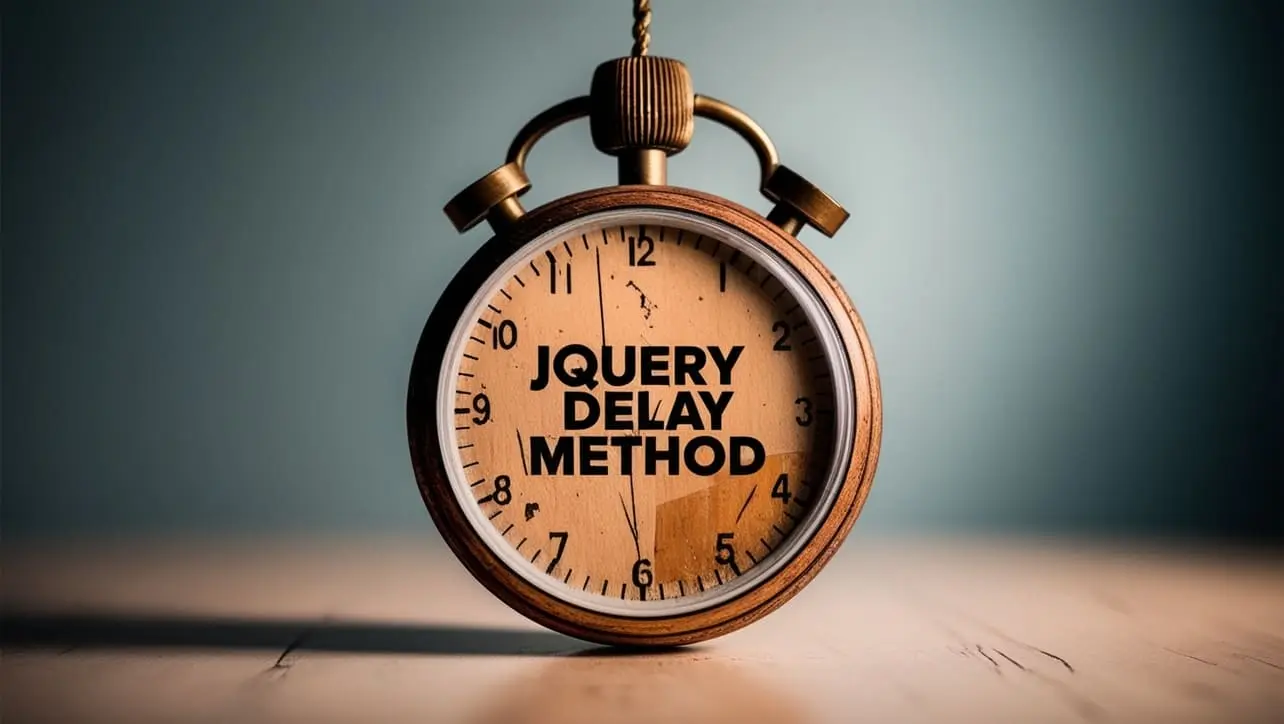
jQuery Topics
- jQuery Introduction
- jQuery Callbacks
- jQuery deferred
- jQuery selectors
- jQuery Ajax Events
- jQuery Ajax Methods
- jQuery Keyboard Events
- jQuery Keyboard Methods
- jQuery Form Events
- jQuery Form Methods
- jQuery Mouse Events
- jQuery Mouse Methods
- jQuery Event Properties
- jQuery Event Methods
- jQuery HTML
- jQuery CSS
- jQuery Fading
- jQuery Traversing
- jQuery Utilities
- jQuery Properties
jQuery .delay() Method

Photo Credit to CodeToFun
🙋 Introduction
jQuery is renowned for its ability to streamline JavaScript coding, offering a plethora of methods to enhance interactivity and animation on web pages. Among these, the .delay() method stands out as a valuable tool for controlling the timing of animations and effects.
In this comprehensive guide, we'll explore how to harness the power of the jQuery .delay() method to create smooth, synchronized animations and transitions.
🧠 Understanding .delay() Method
The .delay() method in jQuery allows you to introduce a pause or delay in the execution of subsequent functions in the animation queue. It's particularly useful when you want to sequence animations or add delays between different actions.
💡 Syntax
The syntax for the .delay() method is straightforward:
$(selector).delay(duration)📝 Example
Delaying Animations:
Suppose you have a simple animation sequence where you want to fade in an element, wait for a moment, and then fade it out. You can achieve this using the
.delay()method as follows:index.htmlCopied<div id="element"></div>example.jsCopied$("#element").fadeIn().delay(1000).fadeOut();This code will fade in the element, wait for 1000 milliseconds (1 second), and then fade it out.
Sequencing Multiple Animations:
You can also use
.delay()to sequence multiple animations on different elements. For example, let's animate two elements with a delay between them:index.htmlCopied<div class="box1"></div> <div class="box2"></div>example.jsCopied$(".box1").fadeIn().delay(500).fadeOut(); $(".box2").delay(500).fadeIn().delay(500).fadeOut();This will fade in box1, wait for 500 milliseconds, fade it out, then fade in box2 after another 500 milliseconds, and finally fade it out.
Adding Delays in Effects:
The
.delay()method can also be used with other jQuery effects. For instance, let's delay the execution of the .slideUp() effect:index.htmlCopied<div id="element"></div>example.jsCopied$("#element").slideDown().delay(1000).slideUp();This code will slide down the element, wait for 1000 milliseconds, and then slide it up.
Chaining Delays:
You can chain multiple
.delay()methods to introduce longer pauses. For example:example.jsCopied$("#element").fadeIn().delay(500).fadeOut().delay(1000).fadeIn();This will fade in the element, wait for 500 milliseconds, fade it out, wait for 1000 milliseconds, and then fade it back in.
🎉 Conclusion
The jQuery .delay() method is a versatile tool for controlling the timing of animations and effects in your web projects. Whether you need to introduce delays between animations, sequence multiple effects, or simply create smooth transitions, this method provides an elegant solution.
By mastering its usage, you can add a new level of polish and sophistication to your web pages, captivating your audience with engaging visual experiences.
👨💻 Join our Community:
Author

For over eight years, I worked as a full-stack web developer. Now, I have chosen my profession as a full-time blogger at codetofun.com.
Buy me a coffee to make codetofun.com free for everyone.
Buy me a Coffee












If you have any doubts regarding this article (jQuery .delay() Method), please comment here. I will help you immediately.